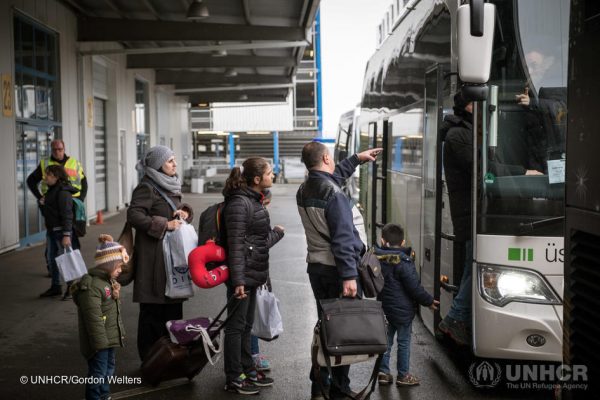Towards a European Union Resettlement Framework?

While the number of states with regular resettlement programmes and annual quotas has gradually increased over the past few years, adopting a common European resettlement framework, with a view to harmonise diverse selection and case processing procedures, remains a major challenge for the Union.
In 2009, when confronted with the low numbers of refugees resettled in the European Union and the few resettlement programmes being implemented by Member States (resettlement is based on voluntary commitments), the European Commission proposed the creation of a common European resettlement policy. With the increasing number of arrivals from 2014 onwards, in particular from Syria, the first European resettlement programme (for 22,504 people) was adopted by Member States on the 20th of July 2015. The EU-Turkey declaration adopted a few months later, on 18th March 2016, included a commitment for 54,000 resettlement places and stated that, for every Syrian sent back to Turkey from a Greek island, another Syrian would be resettled in the EU from Turkey.
In an effort to harmonise the various programmes, procedures and practices in place, in June 2016, the European Commission proposed the adoption of a Union Resettlement Framework. Yet to be adopted and concerning only voluntary States, it would be the first legal framework for resettlement at European level. The objective is to provide the Union with a common, standardised approach to the issue, built on a unified procedure. According to the current Regulation proposal, this framework would also allow the European Union to “speak with a single voice on the international stage” to allow for joint contributions to global resettlement initiatives. For the Commission, this proposal is also a way to help shut down smuggling networks, reduce the number of irregular arrivals and ease the pressure on the countries on the front line.
To achieve this, the Regulation includes the implementation of annual EU resettlement plans, proposed by the Commission each year and adopted by the Council, which would include the maximum number of people to be resettled, provide information about Member State participation and set geographic priorities. The plans would include targeted number of people to be resettled, geographical priorities in terms of where people would be resettled from, information about the specific group(s) of nationals or stateless people to whom the programme would apply. Additionally, the new resettlement framework would include a joint set of standard procedures to select and process resettlement candidates plus criteria for exclusion and common eligibility criteria for those admissible for resettlement such as vulnerability or family ties. Lastly, the creation of a High-Level Resettlement Committee would provide the political direction required to implement the European resettlement framework.
Following the publication of this Regulation proposal, several organisations (including the European Council on Refugees and Exiles (ECRE), the International Rescue Committee (IRC), Caritas Europe and the International Catholic Migration Commission (ICMC Europe)) have welcomed the Commission’s initiative, while expressing doubts about certain measures. For NGOs, resettlement is and must remain a tool for humanitarian and sustainable protection: the proposed framework must not merge this mechanism with other programmes. This could end up reducing the number of places available for the most vulnerable, and could make it harder for States to meet their obligations in terms of family reunification. Additionally, NGOs fear that resettlement could be used to encourage countries to cooperate in measures to control migration and dissuade irregular arrivals. This would go against the very essence of resettlement as a tool to protect the most vulnerable. They are also critical of the fact that the framework includes eligibility criteria which differ from the HCR’s, casting some doubt on the UN body’s role in the identification of resettled refugees. Moreover, the regulation could exclude refugees who have attempted to enter Europe (or who entered) illegally within the past five years, and those who have already been refused resettlement by a Member State.
As with the other instruments discussed in the framework of the reform of the Common European Asylum System (CEAS), this text could not be adopted before the end of the last session of the European Parliament due to a lack of consensus about the “asylum package” as a whole. Prior to the European Council meeting on the 13th and 14th of December 2018, the European Commission invited the Member States and the European Parliament to adopt five of the seven proposals included in the CEAS reform package, including the Regulation concerning the Union resettlement framework – but there has been no response. In the new strategic programme for 2019-2024, published on the 20th of June 2019, European leaders did agree to develop a “fully functioning comprehensive migration policy”, but the future of the CEAS and the Union Resettlement Framework remains uncertain.
